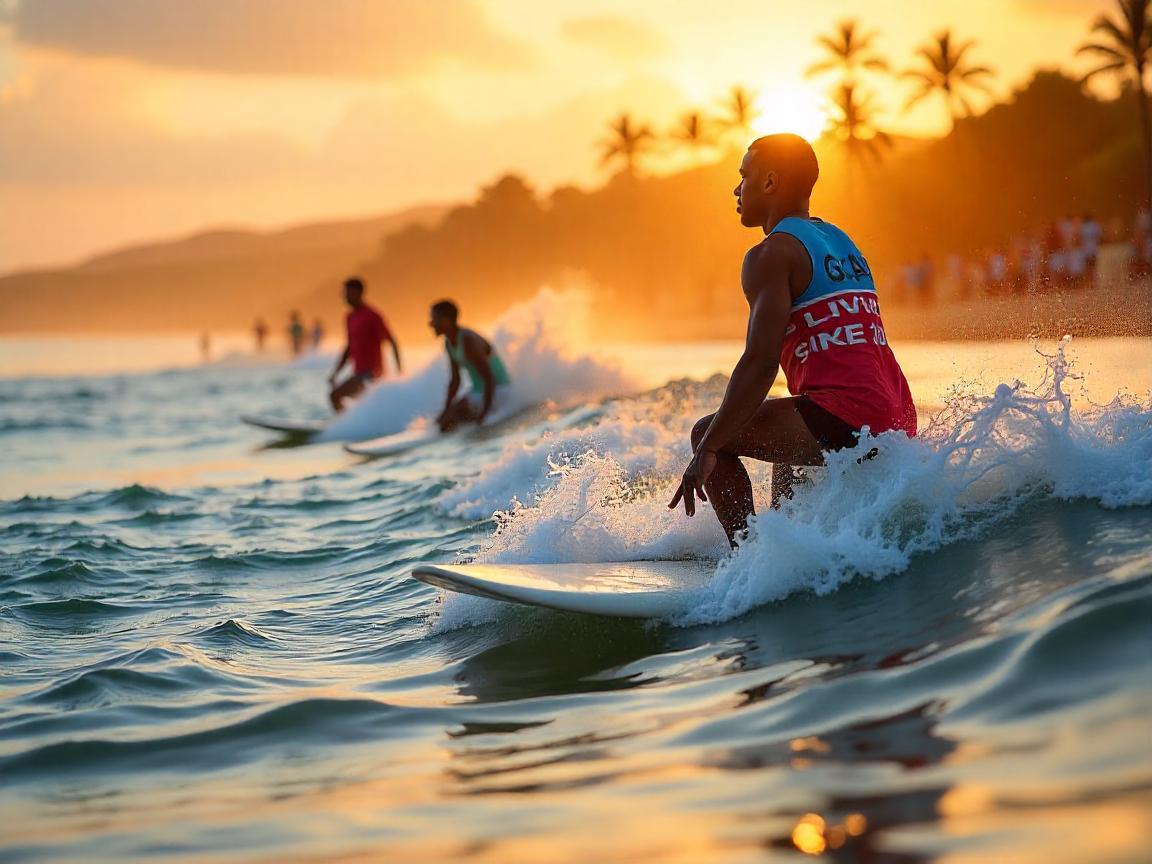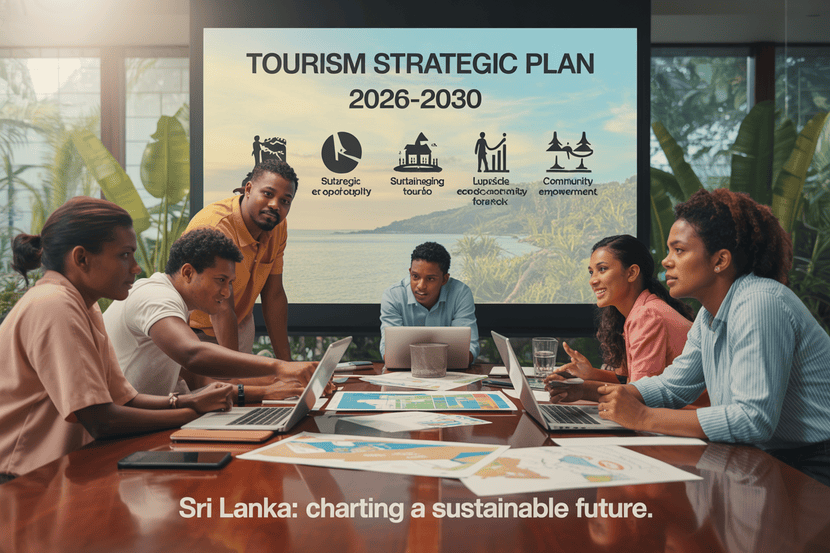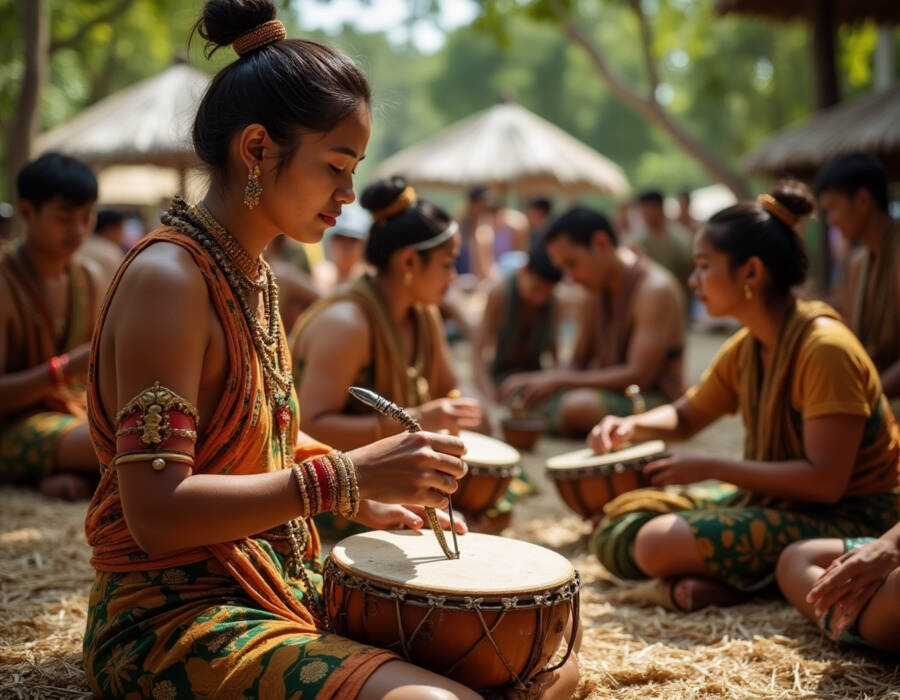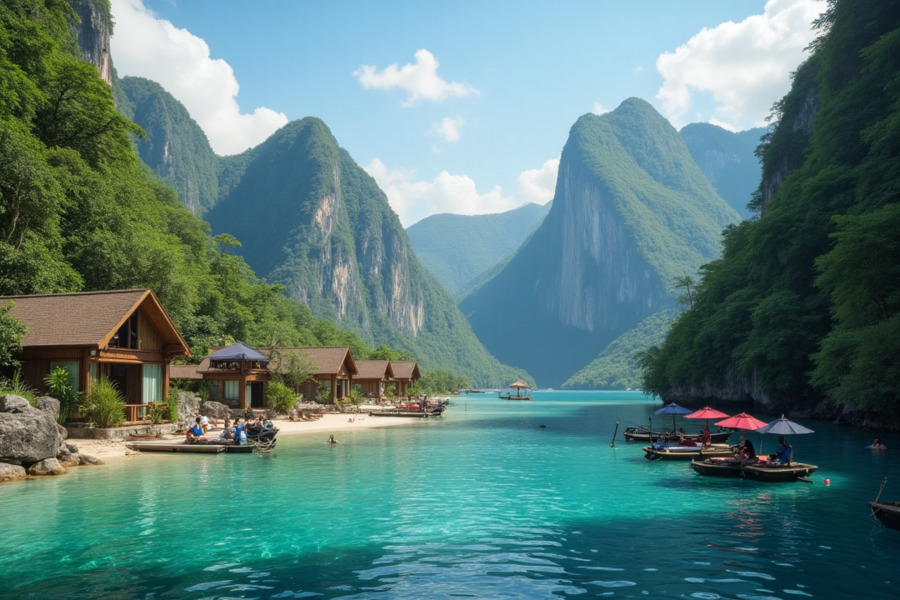≡-Hawaii Unites Florida, Nevada, California, Puerto Rico, Guam, American Samoa, Northern Mariana Islands as US Independence Day Trip Surges, New Update You Need To Know – Viral of Today
<> Viral of Today <>
Home » Destination News » Hawaii Unites Florida, Nevada, California, Puerto Rico, Guam, American Samoa, Northern Mariana Islands as US Independence Day Trip Surges, New Update You Need To Know Friday, June 27, 2025Hawai‘i unites Florida, Nevada, California, Puerto Rico, Guam, American Samoa, and Northern Mariana Islands this year in a way that feels both symbolic and seismic. As US Independence Day trips surge, a thrilling pattern emerges. These iconic and diverse regions aren’t just drawing in tourists—they’re anchoring a new wave of travel energy sweeping across the nation.But this isn’t your typical Fourth of July rush. This is something more—something that links Hawaii, Florida, Nevada, California, Puerto Rico, Guam, American Samoa, and Northern Mariana Islands through a shared mission: to reignite celebration and recovery all at once. Each of these places carries its own story, its own scars, and its own reason to shine brighter this US Independence Day. And that’s exactly why this new update you need to know feels more urgent than ever.Hawaii is setting the tone, stepping forward not just with surf and sunsets, but with cultural pride and sustainable celebration. Florida brings its signature firework spectacles and coastal carnivals. Nevada, anchored by Las Vegas, turns up the volume with late-night shows and desert light. California, always a giant in tourism, rolls out its red, white, and blue across theme parks and sandy shores.Meanwhile, Puerto Rico, Guam, American Samoa, and the Northern Mariana Islands come alive with local traditions layered over national pride—proof that US Independence Day is as diverse as the states and territories that celebrate it.This year, as millions book tickets and pack their bags, these destinations stand united in purpose and passion. The crowds are growing. The celebrations are evolving. The stakes are higher.So what makes Hawai‘i rise to the front of the line? And how do Florida, Nevada, California, Puerto Rico, Guam, American Samoa, and the Northern Mariana Islands reshape the very meaning of a national holiday?The answer begins here—with a deeper look into how these places are not just preparing for the surge, but leading it.This Independence Day, the spirit of travel is sweeping across the US and Hawai‘i is standing proudly alongside destinations like Florida, Nevada, California, and even far-flung territories like Puerto Rico, Guam, American Samoa, and the Northern Mariana Islands. Together, these iconic locations are leading a powerful surge in domestic holiday travel, offering Americans not just celebration—but connection.With over 8 million Americans expected to travel this July 4th weekend, Hawai‘i is ready. From the shores of Waikīkī to the cultural roots of Maui, the islands are welcoming guests with not just fireworks and festivities—but purpose. This year’s tourism strategy leans into regenerative travel, with a strong focus on community-led events, eco-conscious experiences, and Native Hawaiian storytelling.What sets this year apart is unity. While Las Vegas ramps up entertainment, California hosts coastal parades, and Florida bursts into celebration, Hawai‘i quietly sets a tone of meaningful celebration—inviting visitors to honor not just America’s freedom, but also its diversity.Meanwhile, Puerto Rico, Guam, and the Pacific territories are seeing increased visibility. These island regions, often overlooked in the national narrative, are embracing the surge in travelers seeking culturally rich, off-the-beaten-path Independence Day getaways.Back in Hawai‘i, visitors will enjoy everything from oceanfront fireworks displays to local festivals funded by community grants. Yet, behind the celebration is a bigger story—how tourism, when guided by intention, can uplift both travelers and the places they visit.This Independence Day, whether you’re in Honolulu, San Juan, or a California beach town, the message is clear: travel is back—but better, kinder, and more connected.A Domestic-Focused InvitationRecognizing the need to strengthen its most reliable visitor base, Hawaiʻi aligned with other major tourism states—like Florida, Nevada, and California—in a nationwide campaign to promote domestic Independence Day travel. The Hawai‘i Tourism Authority (HTA), alongside travel partners, focused its energy on US based travelers, anticipating over 8 million American trips during the holiday window.With international airlift still recovering, especially from Japan and Canada, the islands leaned into their West Coast stronghold, launching a targeted $6 million marketing campaign in California. The goal? To fill the gaps left by slower global markets and reignite interest in destinations like Maui, still working to regain its momentum post-wildfire.Community-Driven CelebrationsRather than relying on flashy promotions, Hawai‘i Tourism Authority also invested in local culture, funding events and festivals through its ʻUmeke Grant Program. This initiative empowered communities to take the lead—creating immersive, authentic experiences for both residents and tourists.From cultural performances and parades to volunteer-led eco-tours and beach cleanups, this year’s July 4th in Hawaiʻi told a deeper story. It was a chance to show visitors what truly makes the islands special—not just fireworks, but heritage, people, and responsibility.Shifting Governance, Same CommitmentThe lead-up to the holiday also marked a period of government transition. Oversight of HTA’s funding and contract processes shifted to the Department of Business, Economic Development & Tourism, part of a broader governance overhaul. While this introduced some uncertainty in planning, the commitment to delivering a meaningful holiday experience for travelers and locals remained firm.Efforts were made to ensure that tourism-related services were supported across all islands, from hotel staffing to transportation planning, despite budgetary tensions.Balancing Growth With ResponsibilitySustainability was front and center. With tourism consuming nearly 45% of the islands’ water supply and contributing significantly to waste and energy use, regenerative tourism principles shaped this year’s strategy. Vendors were encouraged to implement low-impact practices, and visitor education efforts focused on respectful travel behavior.Meanwhile, travelers arriving in Honolulu, Maui, and the Big Island found experiences rooted not just in hospitality, but in local stewardship—a model that values preservation as much as profit.A New Standard for Holidays AheadThis Independence Day, Hawaiʻi didn’t just welcome tourists. It welcomed them with purpose. The result was a holiday weekend that reflected a future-forward vision—where culture isn’t commodified, communities aren’t sidelined, and tourism is a partnership, not a transaction.As the state continues to evolve its model, this year’s July 4th may serve as a template for how world-class destinations can celebrate without compromise.Hawai‘i’s Tourism Future HangsHawai‘i’s $20 billion visitor industry is standing at a pivotal crossroads. With record visitor numbers, rising community frustration, and mounting economic pressure, leaders across the islands are now tasked with answering one urgent question: how do we redefine tourism in Hawai‘i without losing what makes it sacred—or what makes it work?For decades, the tourism model in Hawai‘i was dominated by the Hawai‘i Visitors and Convention Bureau (HVCB), which brought millions of visitors from the US mainland and beyond. But a seismic shift began when the Council for Native Hawaiian Advancement (CNHA) stepped into the spotlight. Their message was clear: Hawai‘i must move toward regenerative tourism, where Native Hawaiian voices, cultural education, and community benefit take center stage.However, after CNHA was awarded a major state contract to market Hawai‘i to the U.S. in 2022, the process spiraled into legal disputes, procurement chaos, and public confusion. The fallout sparked something deeper—a crisis of trust in the institutions guiding the future of one of Hawai‘i’s most vital industries.Culture vs. Commerce? Not An OptionIt’s a compelling vision—tourism that heals instead of harms. Cultural integrity. Community-based leadership. Stewardship. But for a destination that attracts nearly 10 million annual visitors and supports one in six jobs statewide, those ideals must also be grounded in global marketing acumen and proven business strategy.CNHA has brought passion, purpose, and long-overdue Native Hawaiian representation into tourism leadership. Their rise has excited communities eager for change. But enthusiasm alone can’t replace the deep networks, data intelligence, and decades of strategic success that HVCB brings to the table. HVCB’s expertise in selling Hawai‘i to a competitive global market remains a cornerstone of the state’s economic stability.This isn’t a question of who loves Hawai‘i more. It’s about building a future that honors both culture and performance. Heritage must be preserved—but tourism must also deliver results.Tourism Policy Must Reflect Equity and AccountabilityPolicymakers are now in the hot seat. The future of Hawai‘i tourism hinges on leadership that is not only inclusive but also strategic, transparent, and accountable. There must be clear standards for public contracts, rooted in performance, fairness, and value to taxpayers. Tourism contracts—often worth millions—should not be battlegrounds for politics or ideology. They must serve the public, communities, and future generations.This means supporting cultural advancement without compromising professional execution. Hawai‘i can’t afford a fragmented approach. From hotel workers in Waikīkī to artisans in Hilo, the tourism industry’s ripple effects are too wide-reaching. A collapse in confidence means potential losses in bookings, jobs, and reputation.The Economic Reality of the Visitor IndustryTourism contributes more than just beautiful pictures to Instagram. It’s Hawai‘i’s leading economic engine, driving over 200,000 jobs, contributing roughly 17% to state GDP, and funding schools, roads, and environmental programs. The loss or mismanagement of that revenue would affect every island resident—especially in rural and Native communities.Moreover, in today’s digital-first travel landscape, marketing Hawai‘i requires more than postcards and hula shows. It demands tech-savvy campaigns, real-time traveler engagement, crisis management capabilities, and international media relations. These tools are expensive, complex, and essential to compete against other world-class destinations.What a Balanced Future Looks LikeThe path forward is not about choosing between CNHA and HVCB—it’s about building a system that leverages the strengths of both. Regenerative tourism can coexist with global strategy. Hawai‘i needs cultural storytellers just as much as it needs seasoned marketers.Imagine a hybrid approach where community-based insights inform campaign messaging. Where local stewardship aligns with international outreach. Where organizations are judged by impact, not ideology.The ideal model is one that uplifts Native Hawaiian leadership, restores public trust, and delivers measurable growth. It requires cooperation, not conflict. Evolution, not elimination.Hawai‘i’s Tourism Turning Point Is NowThis moment is more than a management reshuffle—it’s a once-in-a-generation chance to reshape how Hawai‘i shares itself with the world. And the stakes couldn’t be higher. The industry must be resilient, respectful, and ready for the future.With the right balance of culture and commerce, leadership and accountability, Hawai‘i can become a global example of what sustainable, inclusive tourism truly looks like.But time is running out. The world is watching. And how Hawai‘i chooses to move forward could redefine not only its tourism economy—but also its identity.As June 2025 unfolds, Hawai‘i finds itself in a defining chapter of its tourism story. The islands—long celebrated as one of the world’s most beloved vacation destinations—are experiencing a complex moment of reflection, reinvention, and recalibration.Once overflowing with steady waves of visitors, this summer tells a different story. The signs are everywhere: fewer hotel bookings, quieter airport terminals, and softening demand from key international markets. While the first quarter of 2025 boasted strong spending and near pre-pandemic visitor numbers, June has brought an unexpected chill to the tropical high season.Industry leaders call it “the slowest June in recent memory.” For a state that relies on tourism for over 17% of its GDP, the decline is more than just numbers—it’s a warning bell.The Numbers Behind the DipIn April 2025, Hawai‘i welcomed over 833,000 visitors, generating $1.69 billion in spending. That marked a 7.9% increase from the previous year, keeping pace with pre-pandemic levels. But the momentum didn’t last. By early June, forecasts revealed a 4% projected drop in arrivals over the coming months, with an expected $1.6 billion loss in revenue within two years.The reasons are layered. Lingering travel hesitancy following the devastating 2023 Lahaina wildfires, rising airfare prices, inflation-driven household budgets, and slow recovery in Canadian and Japanese markets are all part of the equation.Domestic airlift remains steady—over 4,000 flights and 860,000 seats in April alone—but international access, particularly from Asia-Pacific routes, continues to lag. Fewer flights mean fewer visitors, especially from Japan, a traditionally vital source market.The Cultural and Political CrossroadsBeyond the data, a deeper narrative is playing out across the islands. Tourism in Hawai‘i is no longer just about marketing—it’s about meaning. Conversations once reserved for policy rooms are now taking place in public forums, community halls, and Native Hawaiian councils.The Council for Native Hawaiian Advancement (CNHA) has emerged as a powerful force, championing regenerative tourism and cultural preservation. Their presence has energized local voices and shifted the tourism dialogue from quantity to quality. Yet, their rise has also sparked legal battles and procurement disputes, most notably over a major U.S. marketing contract previously held by the Hawai‘i Visitors and Convention Bureau (HVCB).The public’s trust in the process has been shaken. And as the debate continues, a broader question emerges: Can Hawai‘i build a tourism model that honors both tradition and performance?Maui in Focus: A Microcosm of the State’s StrugglesNowhere are the stakes higher than on Maui, still reeling from wildfire aftermath and a slow tourism rebound. Occupancy rates remain lower than usual, and visitor spending has not recovered at the same pace as other islands.In response, the Hawai‘i Tourism Authority (HTA) has launched a $6 million campaign targeting California travelers, hoping to rekindle interest and boost arrivals. Meanwhile, Maui County faces a major vote on vacation rental regulations this July, seeking to reduce the strain on local housing and real estate markets.For residents, the growing visibility of tourism in daily life—crowded roads, limited rental availability, inflated prices—has reignited calls for tighter control and community-first policies. As such, Maui has become the symbol of Hawai‘i’s broader tourism dilemma: how to welcome the world without losing home in the process.The Power of Spending Over VolumeDespite the slowdown in arrivals, per-visitor spending continues to grow. In Q1 2025, average daily spending reached $277, up 6.2% from the previous year. This shift suggests a move toward value-driven travel, where fewer visitors may still support a strong economy—if managed with care.It’s a promising indicator that a regenerative model may be financially viable, especially when paired with niche offerings such as eco-tourism, cultural immersion experiences, and luxury sustainable accommodations.However, scaling this model without losing the interest of international markets requires marketing precision and operational efficiency—skills HVCB has honed over decades. Thus, blending CNHA’s cultural stewardship with HVCB’s global reach may be the sustainable path forward.The Environmental EquationTourism’s impact extends far beyond economics. According to current state data, the industry is responsible for:45% of the state’s total water usageOver 10% of its waste productionMore than 20% of energy consumptionWith sustainability now a global travel priority, Hawai‘i must walk a tightrope. It must protect its fragile ecosystems while continuing to offer authentic and enriching visitor experiences. Encouragingly, more hotels and tour operators are investing in green practices, from solar installations to waste-free tours.Still, true transformation will only come when sustainability is seen not as a bonus, but as a baseline.The Road Ahead: A Time to ReimagineThere’s no denying that Hawai‘i tourism is at a turning point. The drop in June arrivals is not just a temporary dip—it’s a reflection of deeper shifts in traveler behavior, local expectations, and market dynamics.Policymakers, business owners, and community leaders now face a shared responsibility: to craft a tourism system that protects culture, ensures accountability, and remains globally competitive.That means stronger collaboration between organizations like CNHA and HVCB. It means investing in workforce development, small business support, and culturally respectful visitor education. And it means accepting that tourism in Hawai‘i can no longer follow a “business as usual” model.Final ThoughtsHawai‘i still holds a powerful place in the world’s imagination. But what happens next will determine whether that place remains sacred or becomes overrun.In 2025, tourism in the islands is more than a product—it’s a promise. A promise to honor the land, respect the culture, and uplift the communities that make Hawai‘i truly unique.And to keep that promise, Hawai‘i must evolve. Not later. Now.Tags: Big Island, CNHA, Council for Native Hawaiian Advancement, cultural preservation, Hawai‘i, Hawai‘i tourism strategy, Hawai‘i Visitors and Convention Bureau, honolulu, HVCB, Kaua‘i, maui, Native Hawaiian tourism, pacific islands, Regenerative tourism, sustainable travel, Tourism marketing, Travel Policy, US Independence Day, US Travel News, usa, Visitor Economy, Waikīkī
This information will surprise you!
See also
- Read until the end to discover everything.
- Important information you need to know.
- Interesting facts and helpful tips.
Conclusion
Did you enjoy the news? Keep following us daily!













